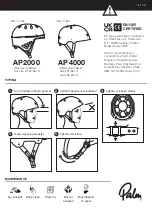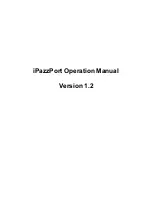
28
CPS 220/64/SV Montage- und Betriebsanleitung
CPS 220/64/SV Mounting and Operating Instructions
28
Unterstationen (CPUS 220 / 64 …) und BUS-Unterstatio-
nen (CPUSB 220 / 64 …) um zusätzliche Endstromkreise
erweitert werden.
Für den Betrieb der Unterstation CPUS 220 / 64 / … wird
eine Netzzuleitung und eine Batterieleitung vom Haupt-
gerät benötigt. Da im Notbetrieb die Batterieleitung die
Unterstationen mit Spannung versorgt, ist diese in Funkti-
onserhalt zu verlegen.
Je nach gültiger nationaler Vorschrift, kann die
Netzzuleitung für die Unterstation CPUS 220 / 64
auch über den lokalen Unterverteiler erfolgen.
Der Anschluss der BUS-Unterstationen CPUSB erfolgt
über die dreiadrige Versorgungsleitung (L+, N-, PE), wel-
che in Funktionserhalt verlegt werden muss. Über diese
Zuleitung werden die Endstromkreise der CPUSB 220/64
/… mit Spannung versorgt. Für die Kommunikation mit
dem Steuerteil wird eine dreiaderige BUS-Leitung benö-
tigt. Bei Unterbrechung der BUS-Leitung schalten die
angeschlossenen BUS-Unterstationen automatisch in den
sicheren Betrieb.
6.3.2. CPS 220 / 20 …, CPS 220 / 64 …,
CPUS 220 / 64 …, CPUSB 220 / 64 / 16,
CPUSB 220 / 64 / 8 …
6.3.2.1. Netz-Anschluss - X1
a) 1-phasig:
Anschluss der Spannungsversorgung an die Sicherung
1F1 und Klemmen N, PE - Klemmleiste X1.
b) 3-phasig:
Anschluss der Spannungsversorgung an die
Sicherungen 1F1 und Klemmen N, PE - Klemmleiste X1.
Bei 3-phasiger Spannungsversorgung ist eine Dreipha-
senüberwachung (DPÜ) im System integriert und mit den
Klemmen L und N des RIF5 verdrahtet.
Der Sicherungswert ist auf den max. Systemstrom,
incl. Ladestufen, ausgelegt. Die Sicherung kann bei
Bedarf, z. B. Selektivität der Absicherung der Netz-
zuleitung, auf den tatsächlichen Systemstrom
angepasst werden.
6.3.2.2. Gerätebus IB2 - X2
Für den Anschluss von externen BUS-fähigen Komponen-
ten sind die KBus,
⊥
, +24V auf der Klemmleiste
X2 vorhanden.
6.3.2.3. Externer Datenbus RTG - X2
Zum Anschluss von Unterstationen oder externer
Überwachungsind die Klemmen R, T, G auf der
Klemmleiste X2 vorhanden.
Nicht kompatibel zur SVPC-Software!
system using sub stations (CPUS 220/64 …) and BUS sub
stations (CPUSB 220/64 …).
Operation of the sub station CPUS 220/64/… requires
a feeder and a battery cable from the main device. Since
the battery cable powers the sub stations in emergency
operation, this must be laid with function preservation.
Depending on the relevant national regulation, the
feeder for the sub station CPUS 220/64 can also be
routed through the local sub-distribution board.
The BUS sub stations can be connected via the three-wire
supply lead (L+, N-, PE), which must be laid with function
preservation. The final circuits of the CPUSB 220/64/… are
supplied with power via this feeder. Communication with
the controller requires a three-wire BUS data line. If the
BUS data line is interrupted, the connected BUS sub sta-
tions automatically switch to safe mode.
6.3.2. CPS 220/20 …, CPS 220/64 …,
CPUS 220/64 …, CPUSB 220/64/16,
CPUSB 220/64/8 …
6.3.2.1. Network connection — X1
a) 1-phase:
Connection of the power supply system to fuse 1F1
and terminals N, PE — terminal rail X1.
b) 3-phase:
Connection of the power supply system to fuse 1F1
and terminals N, PE — terminal rail X1.
With a 3-phase power supply system, a three-phase moni-
tor (DPÜ) is integrated into the system and wired to ter-
minals L and N of the RIF5.
The fuse rating is designed for the max. system
current, including charging stages. The fuse can be
adapted to the actual system current, if necessary,
such as the selectivity of the mains supply line.
.
6.3.2.2. Device bus IB2 — X2
To connect external BUS-compatible components, termi-
nals +Bus,
⊥,
+24 V are present on terminal rail X2.
6.3.2.3. External databus RTG — X2
To connect sub stations or external monitoring systems,
terminal rail X2 accommodates terminals R, T, G.
Not compatible to SVPC software!
















































